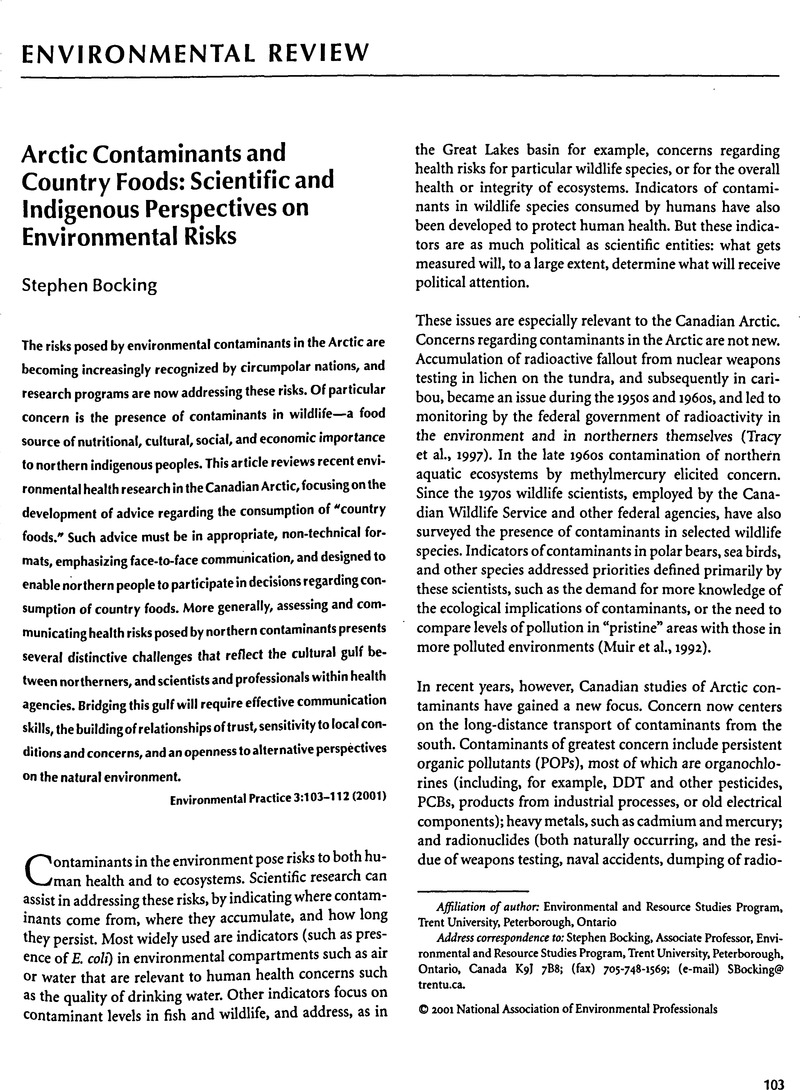Crossref Citations
This article has been cited by the following publications. This list is generated based on data provided by Crossref.
Shoal, Robin
2001.
The Work of the Pew Oceans Commission: Implications for Land Managers.
Environmental Practice,
Vol. 3,
Issue. 3,
p.
142.





